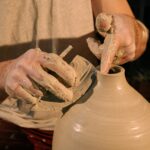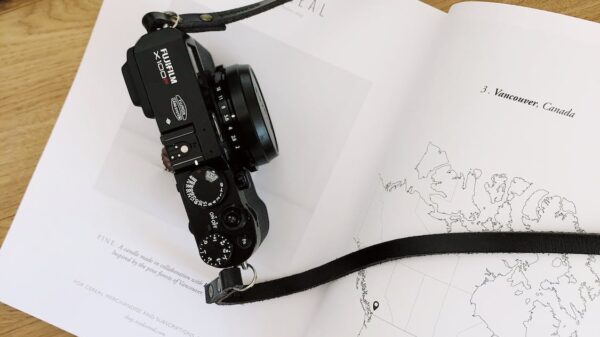The world is a melting pot of cultures, with each one adding its unique flavor to the mix. From food and fashion to art and music, cultural fusion has become a way of life for many people around the globe. In this blog post, we’ll explore the beauty of cultural fusion and how it brings us all closer together in a vibrant tapestry of diversity. Get ready to celebrate our differences as we dive into the wonderful world of cultural fusion!
Introduction to Cultural Fusion
Cultural fusion is the process of combining two or more cultures. It can happen when people from different cultures interact, either through travel, trade, or other contact. Over time, elements of each culture may be adopted by the other, resulting in a new, blended culture.
Cultural fusion can have both positive and negative effects. On the positive side, it can lead to the sharing of knowledge and ideas, and the creation of new and innovative products and services. It can also help people to better understand and appreciate different cultures. On the negative side, cultural fusion can lead to the loss of traditional customs and values, and conflict between different groups.
If you’re interested in exploring cultural fusion further, there are many resources available online and in libraries. You can also seek out opportunities to travel and experience different cultures firsthand.
Impact of Globalization on Cultural Fusion
In a globalized world, cultural fusion is inevitable. As people from different cultures interact with each other, they exchange ideas and traditions. This can lead to the emergence of new hybrid cultures that combine elements of various traditions.
Globalization has had a significant impact on the way we live and interact with each other. It has brought about changes in our lifestyle and in the way we consume goods and services. In particular, it has led to the increased popularity of Western culture and values around the world.
This process of cultural diffusion has had both positive and negative consequences. On the one hand, it has contributed to the spread of democracy and human rights. On the other hand, it has also led to the homogenization of cultures and the loss of traditional customs and values.
Examples of Contemporary Art Movements that Embrace Cultural Fusion
In the past few decades, there has been a growing trend of contemporary art movements that embrace cultural fusion. This is where two or more cultures are combined together to create something new. It can be something as simple as combining traditional art forms from different cultures to create a unique hybrid style, or it can be something more complex like creating an entirely new art form that draws from multiple cultures.
Some examples of contemporary art movements that embrace cultural fusion include:
– Neo- Tribalism: This is a movement that combines traditional tribal arts and symbols with modern materials and techniques. It often results in bold, graphic designs with a strong sense of identity and community.
– Afrofuturism: This is a movement that blends African culture and traditions with elements of science fiction and fantasy. It explores what it means to be black in the future, and often includes themes of space travel, aliens, and otherworldly creatures.
– Indo-Persian Art: This is a fusion of Indian and Persian art styles that emerged during the Mughal Empire. It combines intricate patterns and geometric designs with bright colors and lavish decoration.
– Japonism: This is a Western movement that was inspired by Japanese art, culture, and aesthetics. It became popular in the late 19th century and early 20th century, and often featured bold colors, simplified forms, and nature motifs.
Benefits of Introducing Diversity into Art Movements
Art movements are often born out of a shared experience or feeling among a group of people. This can be based on nationality, ethnicity, race, religion, or any other number of factors. When diversity is introduced into an art movement, it can help to broaden its appeal and make it more relatable to a wider audience.
There are a number of benefits to introducing diversity into art movements. For one, it can help to break down barriers between different groups of people. When people from different backgrounds come together to create art, it can foster a greater sense of understanding and respect for one another. Additionally, diversity can also add new perspectives and ideas to an art movement, helping it to evolve and grow in interesting ways.
Embracing diversity within an art movement can also make it more inclusive and accessible to everyone. Art should be something that everyone can enjoy and appreciate, regardless of their background or identity. By opening up art movements to diverse voices and experiences, we can ensure that everyone has the opportunity to participate in and enjoy the arts.
How to Incorporate Cultural Fusion into Your Own Artworks
In order to incorporate cultural fusion into your own artworks, you will need to consider the following elements:
-Your own cultural heritage and how it influences your artwork.
-The cultures that you are interested in and why.
-How to fuse the two cultures together in a way that is respectful and interesting.
-What materials or mediums you will use to create your fusion artwork.
Your cultural heritage is an important part of who you are as an artist and should be reflected in your work. Consider how your upbringing, values, and traditions have shaped your artmaking practice. What aspects of your culture do you want to highlight in your fusion artwork?
The cultures that you choose to fuse together should complement each other in some way. Perhaps there are similarities between the two cultures that you can explore, or maybe you are interested in juxtaposing them to create contrast. Either way, it is important to do some research on the histories and traditions of both cultures before beginning your project.
When fusing two cultures together, it is crucial to do so with respect and sensitivity. Avoid appropriating or stereotyping either culture in your work. Instead, focus on creating something new and interesting that celebrates both cultures equally.
Think about what materials or mediums will best suit your fusion artwork. Will traditional art forms from either culture be used? Or will you be using more contemporary materials? There is no wrong answer here, but it is important to consider what
Challenges and Limitations of Pursuing a Multicultural Creative Practice
There are many challenges and limitations to pursuing a multicultural creative practice. One of the biggest challenges is simply finding the time and resources to engage in cultural fusion. With so many demands on our time and energy, it can be difficult to find the space to explore other cultures and integrate them into our creative work.
Another challenge is that of language barriers. If we want to truly fuse cultures together, we need to be able to communicate with people from all backgrounds. This can be a difficult task, especially if we don’t have a lot of experience with other languages.
Additionally, there can be a lot of resistance from both sides when trying to fuse cultures together. People may not be open to change or they may not understand what you’re trying to do. It’s important to be patient and respectful when pursuing a multicultural creative practice, as it can take some time for people to come around.
Despite the challenges, there are also many rewards to pursuing a multicultural creative practice. One of the most rewarding aspects is simply being exposed to new ideas and perspectives. When we open ourselves up to new cultures, we can learn so much about the world and ourselves. We can also create something truly unique and beautiful by blending different cultures together.
Conclusion
Cultural fusion has long been a part of our world and continues to be an important part of the changing landscape of society. It is through cultural fusion that we are able to learn from different cultures, gain insight into new ways of thinking, enhance creativity, and develop deeper understanding for one another. By embracing cultural diversity in all its forms, we can foster harmony among people from all walks of life and create a more vibrant and dynamic world for us all to enjoy.









